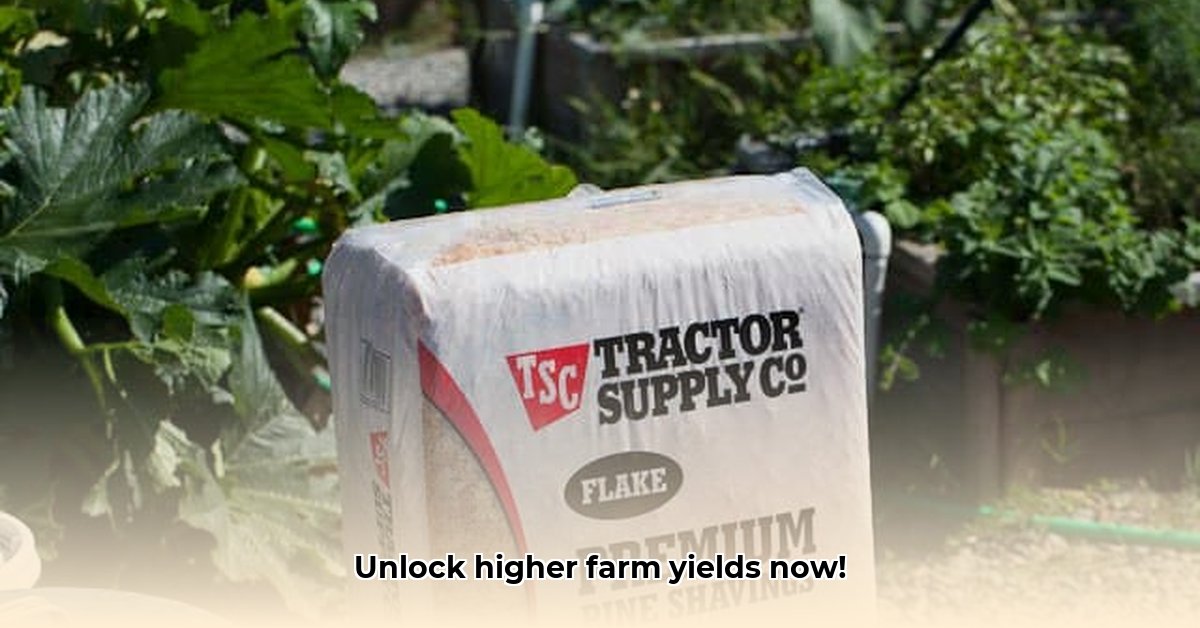
Choosing Your Composting Strategy: Finding the Right Fit
The success of your composting operation hinges on selecting the method that best suits your farm's scale and resources. Three primary approaches exist, each with distinct advantages and disadvantages. Let's explore which one aligns with your needs.
For affordable composting bins, check out pine pellet options.
1. Simple Static Pile Composting: Ideal for smaller farms or home gardeners, this method involves layering organic materials (leaves, grass clippings, etc.) in a designated area or bin. Regular turning (every few days) ensures adequate aeration and faster decomposition. Composter Tractor Supply offers affordable bins to streamline this process.
Pros: Low initial cost, easy setup, suitable for smaller-scale operations.
Cons: Labor-intensive, potentially odorous if not managed correctly, slower decomposition compared to other methods.
2. Efficient Windrow Composting: This method is better suited for larger farms, involving creating long, narrow piles of compost that are regularly turned using specialized equipment (often available through Composter Tractor Supply). The increased aeration accelerates decomposition and minimizes odor.
Pros: Handles larger volumes of material, improved aeration, faster decomposition rates.
Cons: Requires more space, may necessitate investment in specialized equipment, higher initial investment.
3. High-Tech In-Vessel Composting: For large-scale operations, in-vessel systems offer precise environmental control over temperature and moisture, resulting in consistent, high-quality compost. While Composter Tractor Supply might not directly sell these systems, they can offer guidance on sourcing and implementation.
Pros: High-quality, consistent compost production, efficient process, less labor-intensive.
Cons: High initial capital cost, requires specialized knowledge and maintenance, not practical for small-scale operations.
Mastering the Art of Composting: Essential Factors
Regardless of your chosen method, certain critical factors influence composting success. Understanding and managing these elements is paramount to achieving optimal results.
1. Carbon-to-Nitrogen Ratio (C:N): A balanced C:N ratio (roughly 30:1) is crucial for efficient decomposition. Microbes need both carbon-rich "brown" materials (dried leaves, straw) and nitrogen-rich "green" materials (grass clippings, food scraps). An imbalance can lead to slow decomposition (too much carbon) or unpleasant odors (too much nitrogen).
2. Maintaining Optimal Moisture: Your compost should be consistently moist, like a wrung-out sponge. Insufficient moisture hinders decomposition, while excessive moisture creates anaerobic conditions, resulting in foul smells and reduced efficiency.
3. Aeration: The Key to Success: Compost needs oxygen to thrive. Regular turning, especially in static pile and windrow methods, is vital for introducing air and accelerating the decomposition process. In-vessel systems provide controlled aeration mechanisms.
4. Temperature Monitoring: A healthy compost pile generates heat, typically reaching temperatures between 130-160°F (54-71°C). This heat is indicative of efficient decomposition and helps eliminate pathogens and weed seeds. Monitoring temperature helps identify potential problems early on.
The Business of Composting: Costs, Returns, and Environmental Impact
Composting offers significant economic and environmental advantages. While initial investments in equipment or infrastructure might be necessary (Composter Tractor Supply can be a valuable resource here), the long-term benefits often outweigh these costs.
- Cost Savings: Reduced reliance on synthetic fertilizers leads to lower input costs.
- Increased Revenue Streams: High-quality compost is a marketable product, creating potential income streams.
- Environmental Stewardship: Composting significantly reduces your farm's carbon footprint, promoting environmental sustainability.
"Composting is not just good for the soil; it's good for the bottom line," says Dr. Emily Carter, Professor of Soil Science at State University. "Reduced fertilizer costs and potential compost sales can significantly increase farm profitability."
Troubleshooting Common Composting Challenges
Even experienced composters encounter occasional difficulties. Understanding potential problems and their solutions is key to maintaining a healthy and efficient composting system.
| Problem | Potential Causes | Solution |
|---|---|---|
| Foul Odors | Anaerobic conditions, imbalanced C:N ratio | Improve aeration, adjust C:N ratio, and correct moisture levels |
| Slow Decomposition | Insufficient moisture, imbalanced C:N ratio, poor aeration | Increase moisture, adjust C:N ratio, and increase aeration |
| Unbalanced Compost | Uneven layering, improper mixing | Re-layer materials, ensure thorough mixing |
Case Study: Sarah's Compost Success Story
Sarah, a farmer from Iowa, successfully integrated composting into her operation, boosting yields by 20% and generating additional income from compost sales. Her journey highlights the potential of composting to enhance both farm productivity and profitability.
"Composter Tractor Supply was instrumental in my success," Sarah explains. "Their expertise and equipment recommendations helped me overcome the initial challenges of large-scale composting."
Conclusion: Investing in Your Farm's Future
Embracing composting is an investment in a healthier farm and a more sustainable future. Composter Tractor Supply serves as a valuable resource, offering equipment, advice, and support to help you achieve successful composting outcomes. Start small, learn from your experience, and maximize the benefits of this transformative practice.